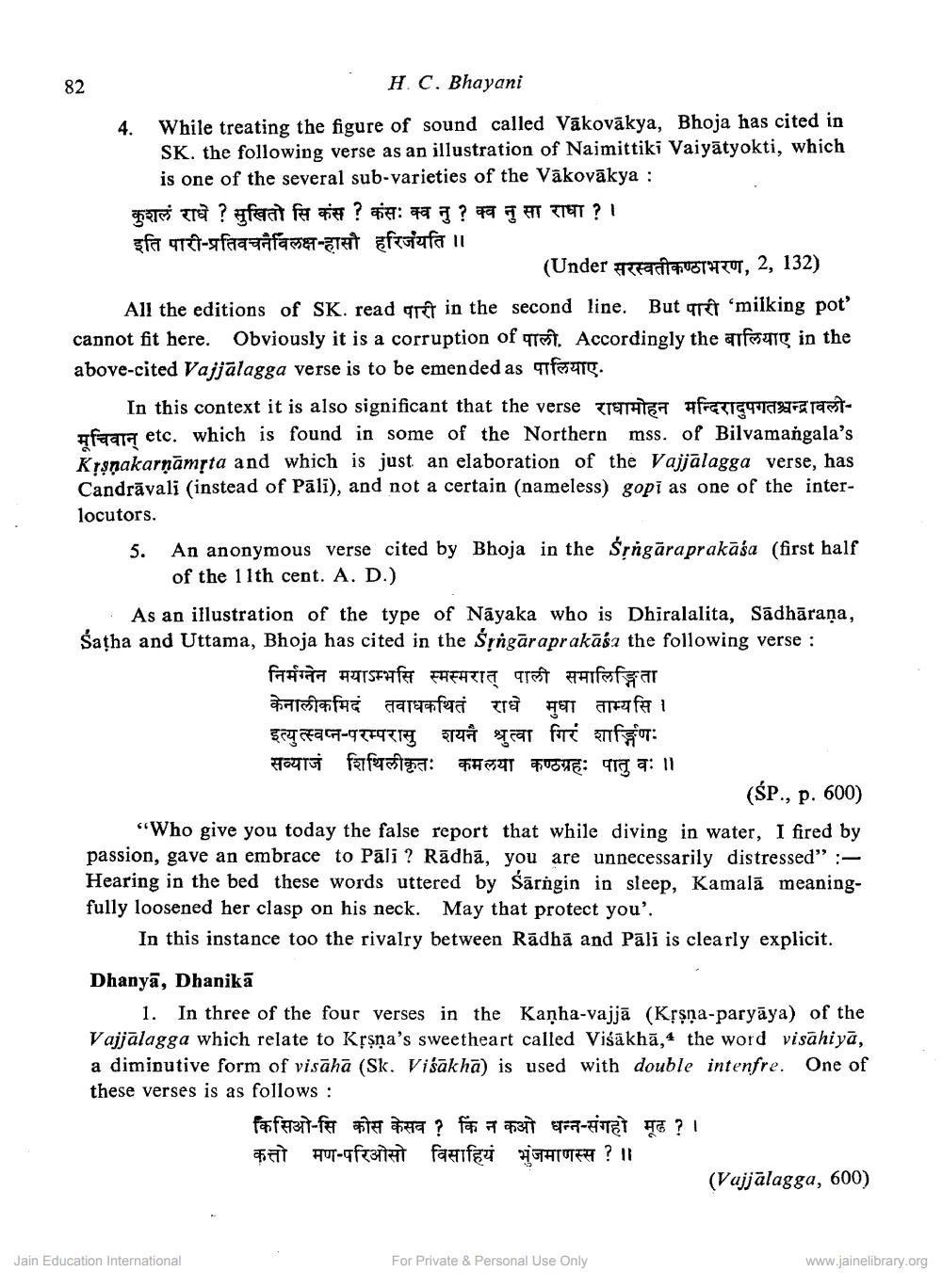Book Title: Pali Dhanya and Carukesi Author(s): H C Bhayani Publisher: Z_Aspect_of_Jainology_Part_2_Pundit_Bechardas_Doshi_012016.pdf View full book textPage 3
________________ H. C. Bhayani 4. While treating the figure of sound called Vākovākya, Bhoja has cited in SK. the following verse as an illustration of Naimittiki Vaiyātyokti, which is one of the several sub-varieties of the Vakovākya : TE TE ? feat fa ai ? : 4T ? T AT TIET? 1 इति पारी-प्रतिवचनविलक्ष-हासौ हरिर्जयति ।। (Under TractUST HOT, 2, 132) All the editions of SK. read qrêt in the second line. But qrit milking pot' cannot fit here. Obviously it is a corruption of qm. Accordingly the artesang in the above-cited Vaijālagga verse is to be emended as fug. In this context it is also significant that the verse राधामोहन मन्दिरादुपगतश्चन्द्रावलीfara etc. which is found in some of the Northern mss. of Bilvamangala's Krsnakarnāmsta and which is just an elaboration of the Vajjalagga verse, has Candrávali (instead of Pāli), and not a certain (nameless) gopi as one of the interlocutors. 5. An anonymous verse cited by Bhoja in the Śrngāraprakāśa (first half of the 11th cent. A. D.) As an illustration of the type of Nayaka who is Dhiralalita, Sadhāraņa, Satha and Uttama, Bhoja has cited in the Srngāraprakāśa the following verse : निर्मग्नेन मयाऽम्भसि स्मस्मरात् पाली समालिङ्गिता केनालीकमिदं तवाधकथितं राधे मधा ताम्य सि । इत्युत्स्वप्न-परम्परासु शयनै श्रुत्वा गिरं शाङ्गिणः सव्याजं शिथिलीकृतः कमलया कण्ठग्रहः पातु वः ॥ (ŚP., p. 600) “Who give you today the false report that while diving in water, I fired by passion, gave an embrace to Pāli ? Rādhā, you are unnecessarily distressed" :Hearing in the bed these words uttered by Sārngin in sleep, Kamalā meaningfully loosened her clasp on his neck. May that protect you'. In this instance too the rivalry between Rādhā and Pāli is clearly explicit. Dhanya, Dhanikā 1. In three of the four verses in the Kaņha-vajjā (Kțşņa-paryāya) of the Vajjālagga which relate to Kțsna's sweetheart called Visakhā, 4 the word visāhiyā, a diminutive form of visāhā (Sk. Visakha) is used with double intenfre. One of these verses is as follows: किसिओ-सि कोस केसव ? किन कओ धन्न-संगहो मूढ ? । कत्तो मण-परिओसो विसाहियं भुजमाणस्स ? ॥ (Vajjālagga, 600) Jain Education International For Private & Personal Use Only www.jainelibrary.orgPage Navigation
1 2 3 4 5 6
